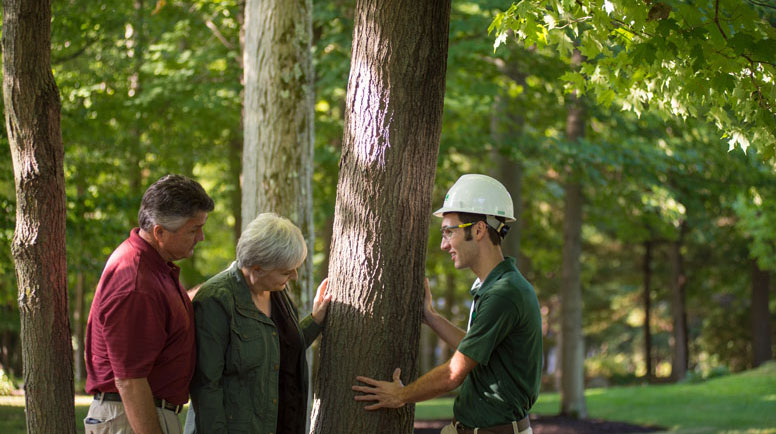SELECTING THE RIGHT TREE FOR YOUR LANDSCAPE PROJECT
So many trees. So little space.
For trusted expertise and superior results,
find a landscape professional near you.

Beware, insects and fungus will be in full force sooner than we think. And with them comes the real possibility of trouble for your trees unless you know how to recognize and stop plant-damaging pests from destroying your valuable and beautiful landscape plants.
Here are some of the most common insect types that can threaten the health and life of your plants. We’ve also included the telltale signs of an invasion, as well as a treatment option for each pest problem.
Anthracnose
Region: All
Signs: Irregular brown spots on leaves, distorted and tattered leaves
Remedy: Remove dead, fallen leaves, and treat with fungicide, as necessary.
Aphids
Region: All
Signs: Wilted leaves, dying shoots and buds, and a sticky goo (honeydew excretions) that attracts sooty mold, flies, yellow jackets and bees
Remedy: A control product or horticultural oil should be applied depending on plant type and preference.
Lace Bugs
Region: West All
Signs: Stippled and mottled yellow foliage, tar-like spots on the underside of leaves, dying branches, and reduced flowering
Remedy: Clear away damaged foliage, replace susceptible plant varieties, and apply an insecticide, if desired.
Scale
Region: All
Signs: Yellow mottled foliage, premature leaf dropping, and dead or dying leaves, branches and limbs
Remedy: Treatment should be applied at the first sign and strong plant health care practices, such as proper watering and pruning, should be followed.
Whiteflies
Region: Florida
Signs: Leaf dropping, plant loss, and a sticky goo (honeydew excretions) that attracts sooty mold
Remedy: Will require product application to the surrounding soil.
Wood-Boring Insects
Region: All
Signs: Sawdust-like deposits, tiny holes in bark, wilting foliage, weak plant canopy, and dying branches
Remedy: Healthy trees and frequent monitoring are the best fix for these pervasive pests, including proper pruning, watering and fertilization.
There are a variety of other pests that pose serious risks to the health of your trees. If you see signs of concern, contact an arborist, a tree care expert, to fully diagnose possible pest problems and provide a comprehensive plant health care and treatment plan.
Photo courtesy of Davey Tree.
We recently updated our Privacy Policy. By continuing to use this website, you acknowledge that our revised Privacy Policy applies.